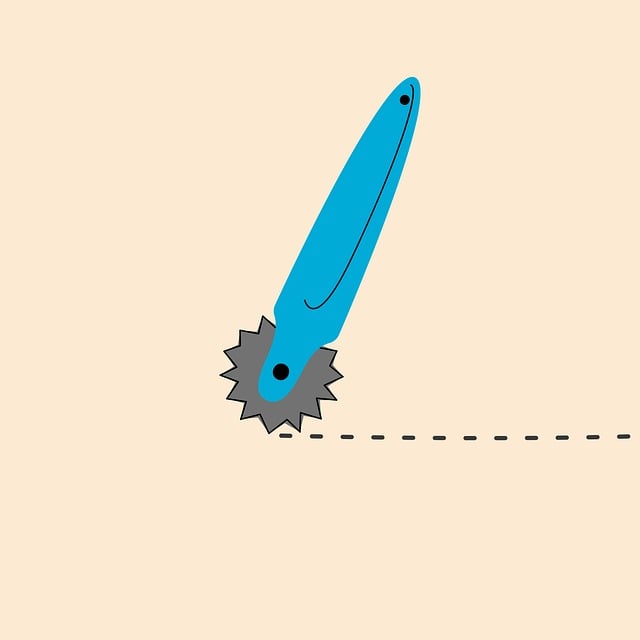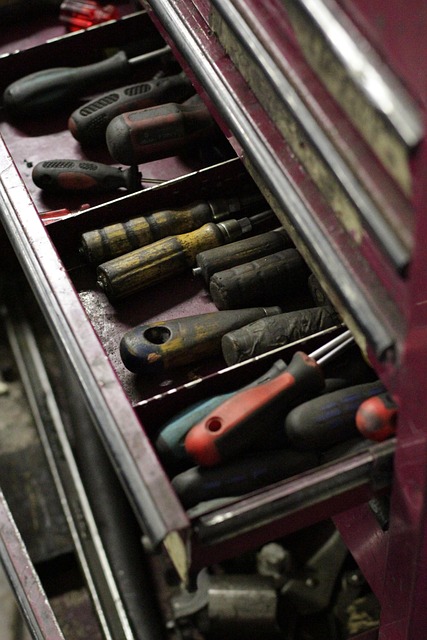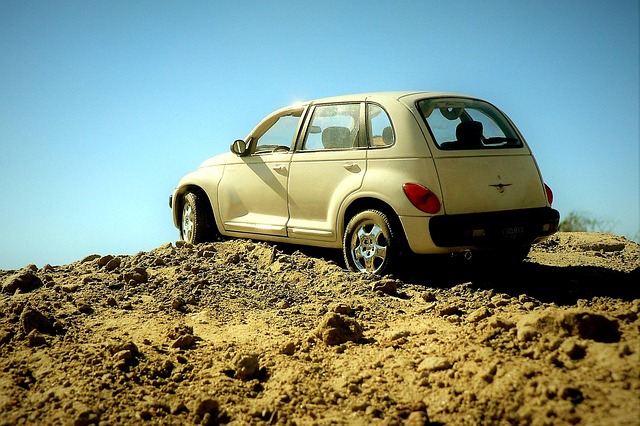Luxury Car Collision Repair: Expertise and Technology for Optimal Results
Luxury car collision repair requires specialized skills and advanced technology due to intricate des…….
In the realm of automotive craftsmanship, luxury car collision repair stands as a specialized art, combining precision engineering with meticulous attention to detail. This intricate process involves restoring high-end vehicles, often imbued with advanced technology and exquisite designs, to their pre-accident condition or even enhancing their aesthetics beyond original specifications. As the global market for luxury automobiles continues to flourish, the demand for expert collision repair has escalated, making this industry a critical component of the automotive service ecosystem. This article aims to provide an in-depth exploration of luxury car collision repair, its multifaceted aspects, and its significant impact on the automotive sector worldwide.
Luxury car collision repair is a specialized service dedicated to restoring or enhancing the structural integrity, cosmetic appeal, and performance of premium vehicles that have been involved in collisions or accidents. It transcends mere vehicle fixing; it involves art and science, merging advanced engineering with traditional craftsmanship. The core components of this process include:
Structural Repair: This entails correcting any misalignment or damage to the vehicle’s frame, ensuring structural integrity and safety. Specialized equipment and techniques, such as laser alignment systems and robotic welding, are employed to precision-engineer these repairs.
Bodywork Restoration: Skilled technicians meticulously repair and reshape dented or damaged body panels, utilizing advanced tools like computer-aided design (CAD) software and high-pressure paint sprayers for precise results.
Cosmetic Enhancement: Beyond structural and bodywork repairs, luxury car collision repair often includes cosmetic enhancements to match the vehicle’s original finish and aesthetics. This may involve clear coating, ceramic coating, or specialized painting techniques to achieve a flawless appearance.
Performance Optimization: In some cases, collision repair extends to optimizing the vehicle’s performance, ensuring that after the accident, it drives as well as it did before. This can include recalibrating advanced driver-assistance systems (ADAS), replacing sensors, and fine-tuning engine performance.
Historically, luxury car collision repair has evolved alongside technological advancements in automotive design and manufacturing. As vehicles become increasingly complex with sophisticated electronics, advanced materials, and precision engineering, the repair process demands a higher level of skill and specialized knowledge. Today, this field requires a blend of traditional auto body repair expertise and up-to-date training in modern technology and safety standards.
The influence of luxury car collision repair is not confined to any single region; it is a global phenomenon, with varying trends and practices across different parts of the world. Here’s an overview:
| Region | Trending Practices | Unique Challenges |
|---|---|---|
| North America | Advanced robotic welding and paintless dent repair (PDR) techniques are widely adopted, offering precise repairs with minimal body panel replacement. | Strict environmental regulations require adherence to stringent emissions standards during the repair process. |
| Europe | The emphasis is on using original equipment manufacturer (OEM) parts and maintaining vehicle authenticity, reflecting the region’s appreciation for classic luxury cars. | Harmonizing repair standards across the European Union presents challenges due to varying national regulations. |
| Asia-Pacific | Rapid urbanization and a growing middle class have led to an increase in luxury car ownership, driving the demand for collision repair services. | Dealing with counterfeit parts and ensuring the availability of genuine OEM components are significant concerns. |
| Middle East | Customization and personalization are popular trends, with customers demanding unique interiors and exterior enhancements. | The region’s extreme weather conditions present challenges in outdoor repair and storage of vehicles during the restoration process. |
These regional variations highlight the diverse nature of luxury car collision repair, shaped by cultural preferences, economic factors, and local regulations. As global connectivity increases, best practices are shared, and technological innovations travel across borders, leading to a more standardized approach to luxury vehicle restoration worldwide.
The economic implications of luxury car collision repair are far-reaching, impacting both the automotive industry and the broader economy. Here’s an analysis:
Market Dynamics: The global market for luxury car collision repair is driven by the growing luxury car market and the increasing number of high-net-worth individuals who own premium vehicles. According to a report by Grand View Research, the global collision repair market, including luxury vehicles, is expected to reach $276.8 billion by 2030, showcasing robust growth.
Investment Patterns: Collision repair facilities, especially those specializing in luxury cars, often require substantial investments in equipment, training, and talent acquisition. This includes advanced welding machines, paint booths, CAD software, and the latest diagnostic tools. Such investments reflect the industry’s importance as a key component of modern automotive service infrastructure.
Economic Impact: The industry contributes significantly to economic systems through job creation, direct and indirect revenue generation, and the fostering of related industries such as auto parts suppliers, insurance companies, and detailing services.
Value Addition: Luxury car collision repair offers opportunities for value addition by providing optional cosmetic upgrades, extended warranties, and personalized restoration packages, enhancing customer satisfaction and loyalty.
Technological innovations have revolutionized luxury car collision repair, improving efficiency, precision, and the overall customer experience. Some significant advancements include:
Computer-Aided Design (CAD) Software: CAD systems enable technicians to create precise digital models of damaged vehicles, facilitating better planning and execution of repairs. This technology ensures that every detail is accounted for, from panel gaps to paint color accuracy.
Robotic Welding and Automation: Robotic welding systems offer enhanced precision, speed, and consistency in structural repairs. Automated body shop equipment streamlines the bodywork repair process, reducing cycle times and labor costs.
Advanced Materials: The introduction of advanced composite materials, lightweight alloys, and high-performance plastics has enabled lighter, more durable vehicles. These materials also present new challenges for repair technicians, requiring specialized knowledge to handle them effectively.
Digital Paint Technology: Digital paint systems offer superior color accuracy and efficient application, reducing the time and labor required for painting repairs. Additionally, these systems can capture and store a vehicle’s original paint code, ensuring a perfect match during restoration.
Telematics and Data Analytics: The integration of telematics and data analytics allows collision repair facilities to monitor vehicle performance, diagnose issues remotely, and provide proactive maintenance, enhancing customer service and safety.
The luxury car collision repair industry is subject to various policies and regulations that govern its operations, ensuring consumer protection, workplace safety, and environmental sustainability. Key considerations include:
Safety Standards: Governments worldwide have established strict safety standards for vehicle repair, including structural integrity, airbag deployment, and electronic system recalibration. Compliance with these standards is mandatory for collision repair facilities to operate legally.
Environmental Regulations: To mitigate the environmental impact of automotive repairs, many regions have implemented regulations governing waste management, emissions control, and the disposal or recycling of auto parts and materials.
Consumer Protection: Policies aimed at protecting consumers from fraudulent repairs, unfair pricing, and substandard work are in place. These include licensing requirements for repair facilities, standardized estimating practices, and dispute resolution mechanisms.
Training and Certification: Many countries mandate specific training and certification programs for collision repair technicians to ensure they possess the necessary skills and knowledge to perform high-quality repairs.
Despite its advancements, the luxury car collision repair industry faces several challenges and criticisms that require strategic solutions:
Skill Shortage: The demand for skilled collision repair technicians outstrips supply in many regions, creating a labor shortage. Addressing this requires targeted training programs, apprenticeships, and incentives to attract and retain talent.
Counterfeit Parts: The availability of counterfeit auto parts can compromise the quality and safety of repairs. Implementing robust supply chain management practices, utilizing trusted suppliers, and educating consumers about genuine parts are essential strategies to combat this issue.
Customer Expectations: Modern luxury car owners have high expectations regarding aesthetics, performance, and technology integration. Meeting these expectations requires constant innovation, precise craftsmanship, and effective communication with customers.
Regulatory Compliance: Keeping up with evolving regulations and standards can be challenging for collision repair businesses. Regular training, industry associations, and staying informed about legislative changes are vital to ensure compliance.
Case Study 1: Restoring a Classic Luxury Sports Car
A renowned classic car restoration shop in the United States successfully restored a 1967 Ferrari 330 GT. The vehicle had suffered severe damage in a collision, requiring intricate bodywork repairs and a meticulous color match. The shop utilized traditional techniques combined with modern CAD technology to ensure precision. After the repair, the car was presented at an international classic car show, winning accolades for its restoration quality.
Case Study 2: High-Tech Collision Repair in Asia
A Japanese collision repair center specializing in electric vehicles (EVs) implemented a fully automated body shop, leveraging advanced robotics and AI for efficient repairs. This facility could handle the unique challenges of EV body panel damage, including precise alignment and low-noise operations. Their innovative approach reduced repair times and improved customer satisfaction.
Case Study 3: Sustainable Luxury Repair in Europe
A German collision repair network embraced sustainability by adopting eco-friendly practices. They implemented a comprehensive recycling program for auto parts and materials, minimized waste through digital design tools, and sourced renewable energy for their operations. This commitment to sustainability attracted environmentally conscious customers and enhanced the company’s reputation.
The luxury car collision repair industry is poised for continued growth and innovation, driven by emerging trends and technological advancements. Here’s a glimpse into the future:
Electric Vehicle (EV) Repairs: As EV adoption accelerates, specialized collision repair facilities will be required to handle unique challenges, such as battery pack damage and electric motor repairs, demanding skilled technicians and advanced diagnostic tools.
Autonomous Vehicle Repair: With the rise of autonomous vehicles, collision repair processes may evolve to accommodate sensor calibration and system updates after accidents, requiring new skill sets and specialized equipment.
Personalized Restoration: The trend towards customization will continue, with customers seeking unique interior designs, exterior graphics, and performance upgrades, creating opportunities for personalized restoration packages.
Remote Diagnostics and Repair: Telematics technology will enable remote monitoring and diagnostics, allowing for proactive maintenance and faster repair times, even in remote locations.
Sustainability Focus: Environmental sustainability will remain a key focus, with collision repair businesses adopting circular economy principles, recycling materials, and utilizing eco-friendly products and practices.
Luxury car collision repair is not merely about fixing vehicles; it’s about preserving and enhancing the value of premium automobiles while ensuring safety and customer satisfaction. As the global luxury car market expands and technological advancements continue, this industry will remain a critical component of the automotive ecosystem. By embracing innovation, addressing challenges head-on, and adhering to environmental and ethical standards, the luxury car collision repair sector will contribute significantly to the future of motoring, ensuring that every restored vehicle rolls onto the road with pride and precision.
Q: How do I know if a collision repair shop is reputable?
A: Look for certifications, such as ASE (Automotive Service Excellence) or I-CAR (Inter-Industry Training Committee) credentials, indicating specialized training. Check online reviews, ask for references, and ensure the shop has a valid license and insurance.
Q: Will my luxury car lose its value after collision repair?
A: Proper restoration can minimize value loss. Skilled technicians can return your vehicle to its pre-accident condition or even enhance its value through personalized upgrades, ensuring it retains its resale potential.
Q: Are there eco-friendly options for collision repair?
A: Yes, many collision repair facilities adopt sustainable practices. These include using recycled materials, implementing efficient waste management systems, and sourcing green cleaning products. Some shops also offer electric vehicle (EV) charging stations for customers.
Q: How can I protect my luxury car from future damage?
A: Regular maintenance, including wheel alignments and tire rotations, can prevent future issues. Park in covered areas or garages to avoid exposure to harsh weather conditions. Consider GPS tracking devices and alarm systems for added security.

Luxury car collision repair requires specialized skills and advanced technology due to intricate des…….

Luxury car collision repair requires advanced technologies and expert technicians. The process start…….

Luxury car collision repair poses unique challenges due to advanced technologies, safety systems, an…….

Luxury car collision repair goes beyond cosmetic fixes, involving skilled technicians who follow pre…….

In the competitive luxury car collision repair market, success hinges on meeting customer expectatio…….

Luxury car collision repair demands advanced training for technicians handling premium materials lik…….

Luxury car collision repair demands specialized knowledge and skilled technicians to handle intricat…….

Luxury car collision repair is a meticulous process requiring skilled technicians and advanced equip…….